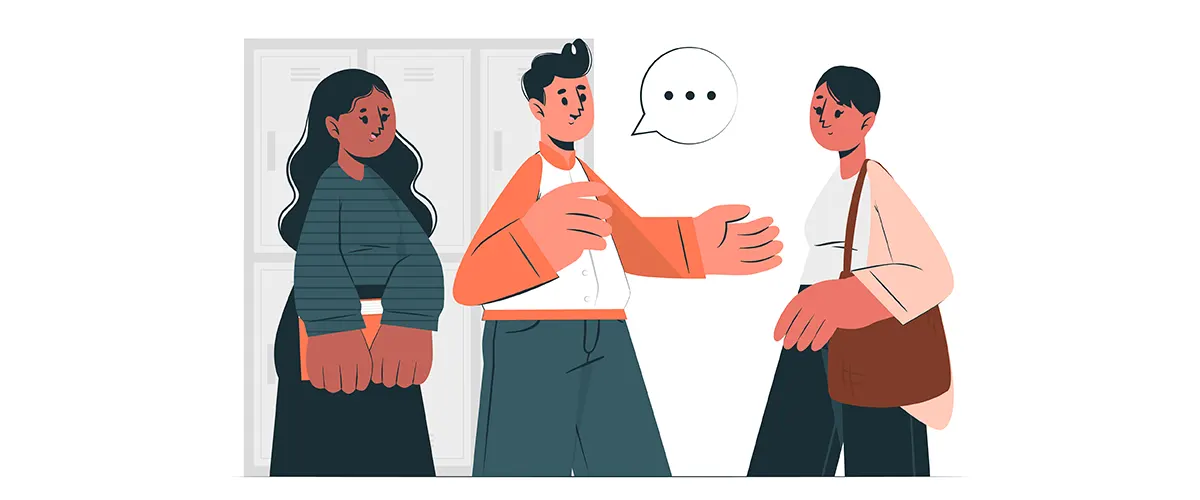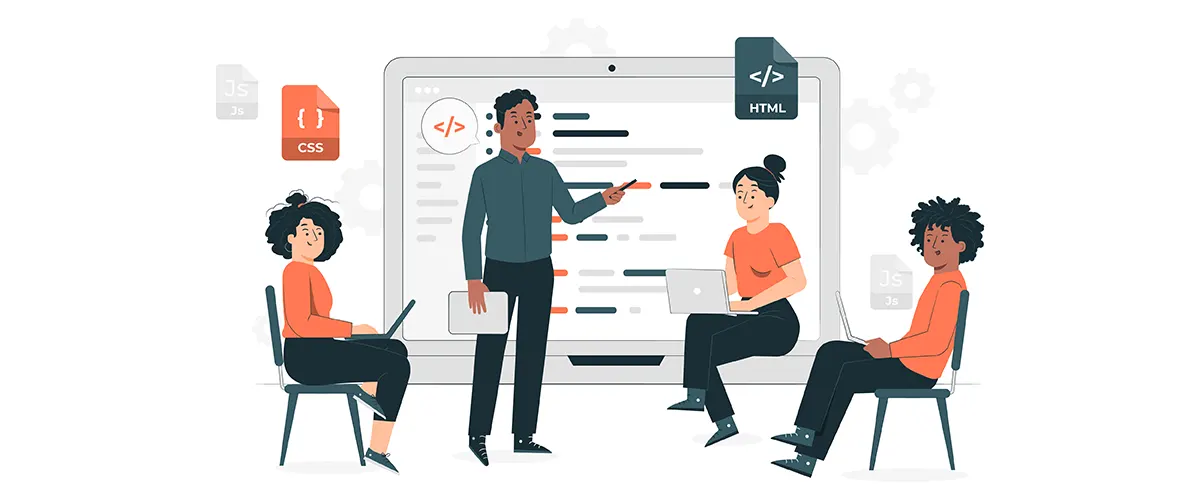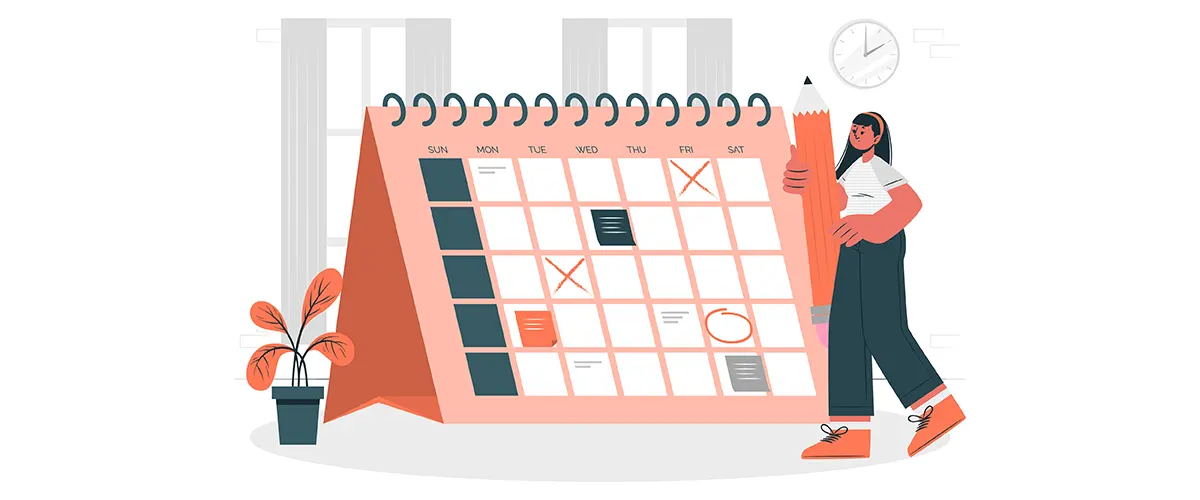Classroom Management Strategies For 2024
Today’s teachers are faced with more challenges than ever before, from addressing the needs of a more diverse student population to managing an increasingly digital classroom. It is no longer enough for educators to simply assign lessons and expect students to follow along.
Today’s students need constant monitoring and support, which can often be taxing for instructors.
To help you tackle these challenges and excel as an educator, we’ve compiled this list of the top 20 classroom management strategies for teachers in 2024. These classroom management techniques will not only help you keep your class organized and on-task but also improve collaboration among your students.

- ▪ Classroom Management Strategies For 2024
- ▪ Classroom Management Strategies For Teachers
- ▪ 1. Establish Ground Rules At The Beginning Of Each Lesson
- ▪ 2. Monitor Your Classroom
- ▪ 3. Use A Classroom Management Tool To Remind Students Of Your Expectations And Set Ground Rules
- ▪ 4. Ensure Every Student Knows Their Role In Class
- ▪ 5. Don’t Hesitate To Call In Backup From School Support Staff When Necessary
- ▪ 6. Make Use Of Technology To Enhance Your Lessons And Engage Students
- ▪ 7. Provide Clear Rules And Consequences
- ▪ 8. Make Use Of Classroom Routines
- ▪ 9. Establish A Culture Of Feedback
- ▪ 10. Use Technology To Help Manage Your Class
- ▪ 11. Establish Rotations Or Routines For Behavior
- ▪ 12. Keep An Eye On Behaviors That Lead To Disruption
- ▪ 13. Create A Positive Classroom Culture
- ▪ 14. Maintain A Positive Attitude
- ▪ 15. Establish Structure And Routines
- ▪ 16. Use Visuals To Keep Track Of Behavior
- ▪ 17. Use Peer Pressure To Your Advantage
- ▪ 18. Avoid Punishing The Entire Class
- ▪ 19. Make Foundations Strong
- ▪ 20. Maintain Your Focus While Teaching Them To Focus
- ▪ Get, Set & Start Implementing These Classroom Management Strategies Today
Classroom Management Strategies For Teachers
1. Establish Ground Rules At The Beginning Of Each Lesson
Students need to know what behavior is expected of them before it becomes an issue. When you start each new lesson, remind students of the ground rules you’ve set for your class and make sure they know how they can follow them.
If you’re working with a particularly large or diverse class, set the ground rules at the beginning of each unit. This will help students better focus on the topic without being sidetracked by minor infractions.
Effective classroom management strategies for new teachers would be to involve everything from setting rules and expectations to maintaining discipline and order.
2. Monitor Your Classroom
Using an app to monitor your classroom is a simple way to keep track of student progress and offer support. You can use it to assign tasks, set due dates, and grade work. That way, you’re less likely to miss a student’s effort, and you can offer the support they may need to complete their work successfully.
If you assign a group project, you’ll be able to keep tabs on its progress and provide feedback at the appropriate time.
3. Use A Classroom Management Tool To Remind Students Of Your Expectations And Set Ground Rules
Many classroom management tools help educators set and enforce classroom expectations. Built-in polls and surveys let you gauge the class’s feelings at any given time, while the results of your polling will inform the rules you set moving forward.
For example, if more than 50% of students say they feel less confident when they contribute to the discussion, you could decide to implement a “raise your hand” rule to encourage more participation.
Keep track of students’ progress and notify them when they’re due for a check-in. It also allows you to set due dates, so you don’t forget to give feedback. That way, you can ensure every student receives the attention he or she needs to succeed.
Such supportive classroom management strategies will surely make your teaching more efficient and generate goodwill among your students.
4. Ensure Every Student Knows Their Role In Class
Students are more likely to follow classroom rules and feel a sense of ownership in their learning when they know their roles.
If you have a particularly large or diverse class, you can use a chart to visually display the roles in your class and make them accessible to every student.
You can also create an “About us” page on your website that includes information about the class, including roles and expectations.
One way to reinforce these rules is to encourage students to use “I” statements.
Students can use these statements to explain their feelings without blaming others. If students are misbehaving, encourage them to use “I” statements to correct their actions.
How to handle students in class properly also determines your classroom management strategies.
A few classroom management and teaching strategies for new and experienced teachers:
- Be friendly but have an authoritative personality
- Be well-versed with your topics and subjects
- Create a friendly environment so that students feel involved in the classroom
- Encourage students to take the initiative and explore new things
- Set learning expectations and study goals weekly and monthly
- Incorporate effective classroom teaching strategies
- Schedule fun activities that make students excited to learn
- Explore innovative ways how to make students concentrate in class
- Motivate students to learn and take care of their physical and mental health
5. Don’t Hesitate To Call In Backup From School Support Staff When Necessary

Teachers are expected to be all things to all people, and that can be a lot of pressure to handle on your own. Sometimes, your best course of action is to call in outside help.
For example, if your students are misbehaving and you’ve tried everything you can think of, a school counsellor could help mediate the situation.
Likewise, if you have a particularly large or diverse class, you may need to designate certain students as “class leaders” to help keep the rest of the class on task and informed. You can also ask your school’s administration to appoint a “class helper” to assist with minor infractions.
Here are a few ways how to manage classroom:
- Understand each student as an individual and develop a 1:1 connection. It might take some time, but it is very effective in the long run.
- Be appreciative of your students and support them. Because each student is different, you might have to develop patience as they all understand things and take time to absorb information at their own speed.
Remember Einstein? He was mocked by his teacher as he couldn’t memorize and hated rote learning. His school teachers believed that Einstein had no desire to study, was a mischievous student, and was wasting his father’s money. But look what he became!
So, always be supportive of your students.
- Set effective limits. Draw a line between when to be friendly and when to become a professional. Too much of anything is bad, so be clear of your boundaries. Students should respect you and still maintain the decorum of the classroom. Balancing is one of the most important classroom management skills.
- Keep to the schedule you set. Good classroom management techniques require you to keep up to your word as well. If you are absent for some reason, be sure to inform your students prior, so they are in the loop too.
- Be aware of the causes of misbehaviour in your class. There are many classroom management strategies for teachers, but all will be ineffective if you are unable to control your class or identify who the mischievous student is, creating havoc in the classroom.
It’s ok to be naughty, as all students are but make sure boundaries are set clear. For example, disrespect, slang, and fights should be a strict no-no!
When you find the naughty student not stopping, take strict action.
- Engage with students and make them feel heard.
6. Make Use Of Technology To Enhance Your Lessons And Engage Students
With the prevalence of technology in society, it’s more important than ever to make it a part of the classroom. Not only will it help you keep students engaged and interested, but it will also allow them to collaborate in new ways.
Supportive classroom management strategies include making the optimum use of technology to not only get entertained by also to educate. You can make use of technology in the classroom by:
- Setting up a virtual classroom that allows students to post and respond to each other’s work.
- Broadcasting your class over an online learning network like Zoom or Google Meet.
- Using an online collaboration tool like Google Classroom to assign and collect work.
- Conduct virtual field trips that allow you to tag locations, record audio, and take photos.
- Make your classroom “smart” by installing a smart board that lets you interact with your content.
- Making technology a part of the classroom doesn’t mean you have to ditch conventional teaching methods. Instead, it should enhance your lessons and allow your students to discover new and exciting learning methods.
A few classroom management skills every teacher must have:
- Communication skills
- Ability to listen empathetically
- Patience
- Effectively collaborate
- Ability to adapt to difficult situations
- Knowledgable about their field
- Engaging classroom presence
- Value in practical learning
- Be open to learning from students
- Exchange of best practices
- A lifelong love of learning
Today’s students are more diverse and tech-savvy than ever before. This means they need more guidance and support than previous generations.
When students know what is expected of them and understand their role in the classroom, they are more likely to follow classroom rules.
You can use technology to enhance your lessons and engage students. Making use of technology will allow students to collaborate in new ways.
Keeping students right at the right time is no easy feat. Even veteran teachers have days where keeping their students on task and interested in learning feels like an uphill battle.
If you’re struggling to keep control of your classroom, that’s okay. Teaching is a difficult job, and teaching kids can be even more challenging. But with a little bit of prep work, before school starts back up again, you’ll find your groove this new school year.
Read on for some supportive classroom management strategies and tips to settle your class effectively in 2024!
7. Provide Clear Rules And Consequences
If you want your students to follow the rules, you have to lay them out for them—plain and simple.
While every situation will be different and require a different response, your students must know what they can and cannot do in your classroom, and they must know what the consequences are if they don’t follow them.
If you’ve ever taught a younger grade, you might have heard of the three or four magic words: “because I’m your teacher.”
While this isn’t a great long-term solution, it works in the short term. When handling misbehaviour, it’s important to remain calm and collected.
The best thing to do is to call students out one at a time, in private, and explain the situation. Ask them to explain their side of the story, and ask them if there is anything you can do to help them.
Finally, explain what consequences they’ll face if the misbehaviour continues.
8. Make Use Of Classroom Routines
Many of the rules and expectations you have for your students will be outlined by the school and in your syllabus.
You may also be able to find commonalities between your students. If you see that many of your students enjoy reading, you can make it a daily routine. The same goes for other things like writing or even a class discussion.
Building routines will help keep your students engaged, and it will help them develop good study habits. This will also help you with time management, as you’ll know when certain activities need to happen throughout the day.
If you have a few students who are struggling to get into a routine, you may want to meet with their parents and see if there’s anything they can do to help.
Some children are more sensitive to change, and if you make too many adjustments at once, they might not be able to handle it.
A few components of classroom management to help you control the behaviour problems inside and outside the classroom are:
- Design your classroom properly – Arrange your classroom decor, accessories, and learning resources thoughtfully. Make sure the students’ furniture, learning stations, and device placement are as per their liking.
- Check your mode of instruction – Swap your learning, delivery, and communication styles with different classes. For example, you can engage your 5th graders with digital gamification. Raise the curiosity of your 8th graders with small group discussions on their favourite topics.
All these are effective classroom management strategies for new teachers and experienced.
- Involve students to create classroom guidelines – As highlighted earlier, make them a part of your teaching curriculum and instil a sense of responsibility to teach and take the lead as well.
Effective classroom management skills should be based on mutual conclusions and respect. When you respect your students, they respect you too.
9. Establish A Culture Of Feedback
You don’t need to wait until a big project is due or a test is coming up to start giving feedback.
Giving feedback is a great way to help students learn from their mistakes. It also gives them an idea of where they stand with their work.
Some classroom management idea you can take inspiration from is to inculcate an environment of open communication and feedback.
Not all students learn at the same pace, nor do they all have the same strengths. Giving them regular feedback will help them set realistic goals while also allowing them to know where they need to improve.
You might want to meet with your students at the beginning of the year to find out what they expect from you as a teacher. Or, you can ask them to fill out a feedback form or write them letters.
You can also ask your students to keep track of your feedback and their progress in a journal.
10. Use Technology To Help Manage Your Class

While some may shudder at using technology to manage their classroom, it’s an effective way to keep your students on task.
There are several apps and websites that can help you with classroom management.
Some even have features that allow you to record what’s happening in the classroom from your computer.
Some great apps for managing your classroom include:
- ClassDojo
- Kahoot
- Classkick
- Socrative
- Edpuzzle
- Eduwebs
- Hapara
- Classroom
- VoiceThread
- Desmos
- Quizlet
- Google Classroom
- iClicker
11. Establish Rotations Or Routines For Behavior
If you notice a certain group or individuals who are disrupting the general flow of the classroom, you may want to try implementing some rotations or routines.
This is where you group students together based on similar interests or skill levels. For instance, you might want to group your students into reading, writing, or computer groups.
You can also have your students rotate between stations, such as a break-out station, a presentation station, a debate station, and so on. This will help keep students from getting too antsy.
It will also give you the opportunity to evaluate what’s happening in the classroom and intervene when necessary.
12. Keep An Eye On Behaviors That Lead To Disruption
Whether you use a management board or a word wall to keep track of infractions, you’ll have a better idea of which rules and consequences need to be enforced more often.
That said, you’ll also have a better idea of which behaviours need to be addressed right away.
A few class control tips for teachers could be:
- For instance, if you see a lot of inappropriate behaviour or interruptions during class, you can start to keep track of that. You can even create a colour code to indicate the severity of the behaviour.
For example, red means you need to address it immediately, and blue means it can wait.
- Response to intervention (RTI) is a strategy you may use to identify and support students with learning or behaviour needs.
The motive behind RTI is to identify trouble spots on time. If the need arises, you can support the identified students with individual intervention or in small groups.
The goal is to improve students’ behavioural skills by delivering exercises to help reinforce key lessons, so they understand what they did was not correct.
13. Create A Positive Classroom Culture
A positive classroom culture doesn’t just happen. You need to put in the effort to create it. This means being consistent with your rules and expectations, celebrating your students’ successes, and offering positive feedback.
Your classroom culture can be broken down into three parts:
- The way you respond to students
- The language you use
- The expectations you have for your students
Good classroom management techniques are those where you don’t have to force anything. Just your non-verbal action is enough to make the student understand what to do.
That doesn’t mean you have to be strict or your students need to be scared of you or anything, but just you need to have and maintain that authority (without scaring them).
14. Maintain A Positive Attitude
Your attitude has a big impact on your classroom. It’s easy to get frustrated in the classroom, but taking time to regroup and ground yourself can help you keep a positive attitude.
The best way to keep a positive attitude in the classroom is to make sure that you’re taking care of yourself.
Eat healthily, get enough sleep, and take some time to relax. When you’re running on empty, it’s easy to let things get you down. A balanced life promotes a more positive attitude in the classroom. You can also try writing down things you’re grateful for each day.
This practice is scientifically proven to improve your mood and outlook on life. It can also help you focus on the positives in your classroom and ease any frustration you may be feeling.
15. Establish Structure And Routines

While some of the classroom management techniques above can be helpful in the classroom, you also want to make sure you have a strong structure and routines.
This doesn’t mean you need to be super strict and regimented, but it does mean you need to have a general idea of what will happen during a typical school day. Keep in mind that you can always change your schedule if you find it’s not working.
You may want to start by looking at the syllabus and seeing what your day-to-day schedule looks like. Some teachers like to start their day with a fine arts class or a group project.
You can also check with your administration to see what their expectations are.
16. Use Visuals To Keep Track Of Behavior
Keeping a journal is one way to track student behaviours, but it can be time-consuming. Instead, you can use visuals in your classroom to keep track of student progress, behaviour, and interests.
Some classroom management ideas and teaching techniques you can implement in your classroom are:
- Some teachers have found success using mood boards. Mood boards are great for visual learners and can help students stay engaged while also giving teachers information on who they are.
- You can also use a data wall or visual schedule, or you can use a hashtag wall. A hashtag wall is a great way to engage your students and spark discussion.
- Make way for a more disciplined and engaged classroom. Encourage discussions if you teach students from class 8th onwards. Stimulate their intellectual capabilities so that they become better, informed, and smart individuals with independent thinking.
17. Use Peer Pressure To Your Advantage
Peer pressure is something that can be used in a positive way in the classroom. This is especially true if you have a close-knit group of students or if you have students who are friendly with one another.
For instance, you can have students hold each other accountable and meet with their peers to discuss the day’s activities, projects, and upcoming assessments. You can also ask your students to peer-review each other’s work.
This is a great way to build trust and have students help each other improve.
This also helps you have control over your class in a not-so-strict-or-overbearing way but still ensures the seriousness and decorum of a class.
Some class control tips for teachers:
- Make such decorum in the classroom that respect each other
- Ensure mutual trust, support, and loyalty to each other
- Allow students to develop classroom rules too
- Ensure effective and open communication
18. Avoid Punishing The Entire Class
Even after following all these classroom management ideas, techniques, suggestions, and strategies, you’re a human, and you might not implement them to the best possibility.
Some students have the habit of getting on your nerves. While some are just beyond difficult to manage no matter how polite, patient and protective you are.
You might lose your temper, and when some uncomfortable situation arises, you might unwillingly punish the entire class even though only one or a few students are at fault.
This might give temporary relief, but it disturbs the entire classroom management in the long run because it impacts the students who are behaving correctly.
So, instead of punishing the whole class, it can help to gently call out students who are misbehaving or disrupting your class.
This can be a question such as, “Do you have a question?” or “Do you need help?” instead of scolding them. A few scolds may impact the students in ways you don’t know, so always try to listen to their part of the story too.
19. Make Foundations Strong
Keeping students in the right place at the right time is no easy feat. Even experienced teachers have days where keeping their students on task and interested in learning feels like an uphill battle.
If you’re struggling to keep control of your classroom, that’s okay. You’re not alone.
You can make a lot of progress with some basic techniques, but you have to stay consistent and apply them consistently.
20. Maintain Your Focus While Teaching Them To Focus

Keeping your students in line isn’t an easy task, even for the most experienced and seasoned teacher. It doesn’t matter if you teach elementary-aged children or university-aged young adults, you’ll always have to keep an eye on your students and make sure they’re staying on task and off of social media.
Having a daily routine and classroom management plan will help you stay organized and allow you to address problem areas and issues as they arise. Using these classroom management strategies will help you keep your classroom in order!
Get, Set & Start Implementing These Classroom Management Strategies Today

As you move into the new session, with a new class, and a newer environment, it’s time to start thinking about classroom management strategies for 2024 and beyond. As a teacher, you must also evolve with the trend and create an environment that is conducive to learning.
We hope these classroom management guides, with tips, suggestions, strategies, and ideas, can make a big difference in the quality of your student’s learning experience.
An effective classroom management strategy is one that makes learning fun and memorable. Creative yet disciplined.
No more is it that a teacher is the only teaching and one-way communication. For your teaching to be truly memorable, ensure two-way communication so that the student feels you are not talking to them but talking with them.

